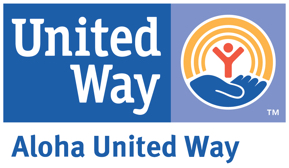
All of Hawaii’s families deserve the chance to live a life where their most basic needs are met. However, with one of the highest costs of living in the nation, many of Hawaii’s households still struggle to afford basic necessities like housing, food and health care.
That’s where an underutilized piece of our tax code can help make a difference — the Earned Income Tax Credit, or EITC. Created with bipartisan support at the federal level in the mid-1970s, this credit allows working families — especially families with children — to keep more of what they’ve earned through their labor at tax time.
In 2017, Hawaii took the historic step of passing its own state-level EITC, which provides tax relief alongside the federal credit. In the last five years, Hawaii’s EITC has delivered more than $100 million in tax relief for working families. In 2020, 64,000 residents benefited from the state EITC, receiving an average credit of $328.
But unless the Legislature takes action this month by passing a bill to renew Hawaii’s state EITC, tens of thousands of households could lose access to this important lifeline at a critical point in our state’s pandemic recovery.
Many of the families that would lose out if the state program expires can be characterized as “ALICE” households. ALICE stands for Asset-Limited, Income-Constrained, Employed. In 2020, Aloha United Way (AUW) commissioned “ALICE: A Study of Financial Hardship,” to help identify the working families in our state who are struggling to make ends meet in the wake of rising costs for housing, food and other basic essentials.
This report showed that 42% of Hawaii’s households were living at or below the ALICE threshold before the pandemic (about 595,000 people at that time). Although employed, these households were still struggling to get by, given Hawaii’s high cost of living. Many of these households never fully recovered from the 2008/2009 recession and work in sectors that are essential to our tourism-focused economy. Due to the economic impacts of the pandemic, the ALICE population has now ballooned to an estimated 59% of our population as a result (perhaps more than 800,000 local residents).
On April 4, AUW released a special, children-focused ALICE update revealing that, in 2019, 47% of all children in Hawaii lived in households experiencing financial hardship. Having two working parents isn’t enough to avoid this fate — 28% of Hawaii children in households with two adults in the labor force were still below the ALICE threshold in 2019, prepandemic.
The EITC is tailor-made for this problem — targeting tax relief to the children and families that most need it. Instead of letting it expire, the Legislature should improve the credit by making it “refundable,” like the federal EITC. Nonrefundable EITCs reduce a person’s tax liability, but they do not boost the size of a household’s refund. This means that workers with the lowest incomes cannot access the full value of the state tax credit because they often have little to no income tax liability.
The EITC is far more effective as both a household budget lifeline and as an economic stimulus when it is fully refundable and puts cash directly in the hands of families that need it most.
The Legislature should invest in working families by making Hawaii’s EITC both permanent and fully refundable. Doing so would boost the incomes of more than 98,000 residents by an average of $424, resulting in more than $50 million in economic activity for our local economy. These are the households that have been hit the hardest by the pandemic, and the Legislature should leverage the power of the state’s EITC to help put these hardworking families on a path moving toward economic success.
